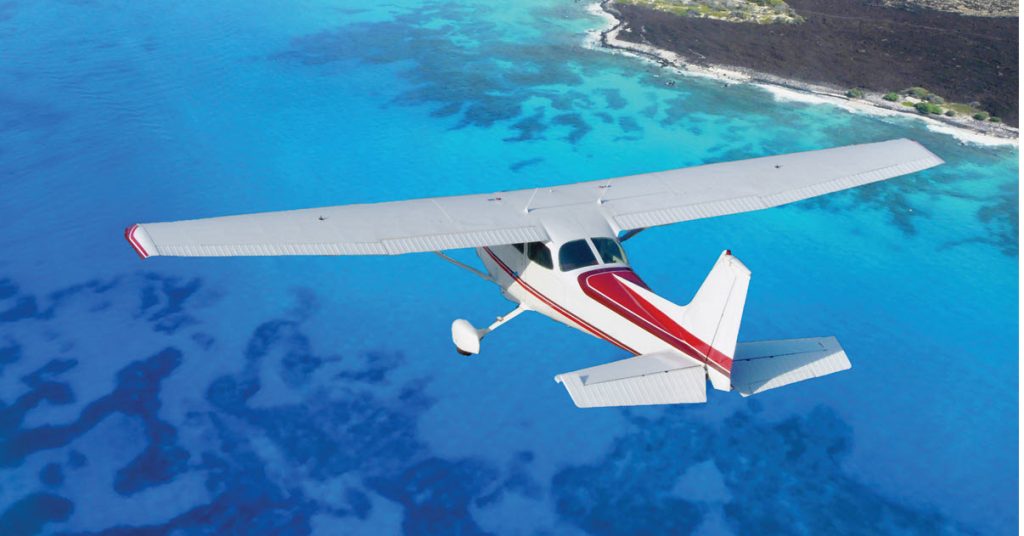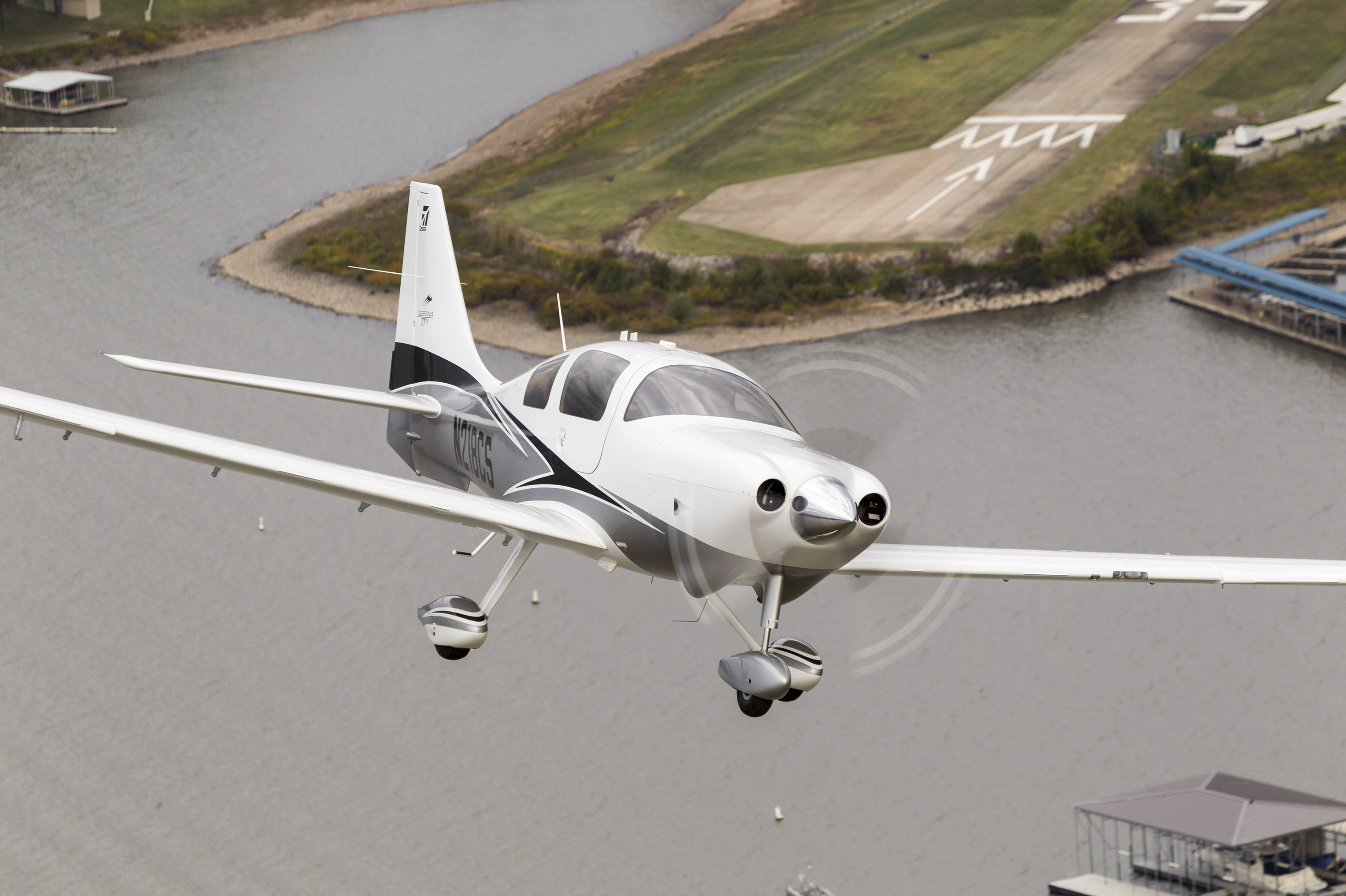
Recently there was a news story about a pilot in the Southeast who had engine trouble. That pilot opted for an emergency landing on a busy bridge instead of in the water, resulting in a casualty of an automobile driver, which brought up conversations about land, water, roads … where should you make an emergency landing?
But before we get to that question, one of my favorite quotes from Top Gun (from the original movie) is, “Your ego is writing checks your body can’t cash!” How true that is. If your ego alone makes decisions, it can result in a disastrous situation, often deadly.
Talking about ego, pilots tend to be sort of ego-oriented people (not that there is anything wrong with that.) We partake in an industry that has very few participants and the activity has a potential for high risk. I know many pilots who do not think they have any ego. But think of the industry; what do we have, about half a million registered pilots? The last boating article I worked on indicated there were over 17 million people participating in recreational boating activities, and the recreational boating businesses think they have a small market. Aviation is smaller than that.
In a way, pilots are also life-and-death decision makers, ergo the ego part. I am one of those people and think that my ego has gotten in the way a couple of times in my life, or maybe more than a couple of times.
Margins for Error
Aviation is one of those activities with little room or margin for error. Sure, you can make minor mistakes and still be safe. You can overshoot a turn from base to final and still make the runway. You can also deviate from your altitude by 25 feet and usually not run into any major problems. Don’t misunderstand, I am not condoning flying in a careless manner. I am just trying to state that we do not have to be as precise as many non-pilots believe we are, although we don’t want them to know that.
All this precision and ego talk came up when I was asked to do a presentation for a group out West. This aviation community had recently suffered the loss of an aircraft and pilot that was on its way to the airport. The “community” hangar talk questioned why the pilot made the decisions he did. The pilot tried to return to the airport, when there didn’t appear to be any chance of that happening. This issue brought up a conversation as to what we pilots think we can do and what should have priority in an emergency situation.
From an insurance standpoint, I always tell people that aircraft (or when my wife is upset with me, her version is “men”), are like buses: There is always another one coming down the street. That doesn’t mean we care less about our planes, but it just means we believe we can always get another one.
It’s Just Metal
This is a difficult concept for many pilots to handle. If the pilot has spent years locked in a shop, building the plane of their dreams, then it feels like it is more than just any airplane. Many owners have invested a lot of sweat equity to build or maintain their aircraft. It can take years of toiling (and money) to get the aircraft to a condition the owner desires and equipped the way they want it. All those evenings of polishing, replacing screws, draining oil … it becomes like training a favorite dog. We hate to think we are going to lose that time, or the results of our labor.
Well, you know what, sometimes you may have to get over it! The time doesn’t come back. If what you were after was the experience of building the airframe or the chance to fly that plane, you got that.
Not to sound harsh and uncaring. I’m basically the same way. I hoard things from years ago because I just might need them someday, and the day I let it go at a garage sale is the day I’ll be looking for it. I shop for houses with garage and shop space in mind. I hate letting my Jeep sit out overnight. I hate to get rid of anything I have had for even for a couple of days, let alone years. We all have our little idiosyncrasies.
But one area we should be serious about is safety, and you might have to make a safety-related decision when you are flying.
Plane or Occupants?
So, the question is, what do we save — the plane or the occupants? Obviously, you will save the occupants first. And in reality, it is a very fine line between saving occupants and minimizing damage to the plane. If you seriously damage the plane, your occupants are in trouble. So, at first glance, we say “occupants,” until we are given an example.
A good example of this would be my Smith Miniplane. This is a small, single seat, open cockpit biplane. I was having trouble deciding on a parachute that would fit in the plane and I was asked the question of when I would use the parachute. My first response was when the plane broke. But there was no recorded history of this type of plane breaking up in flight.
Then it was the question of control problems. Would I continue to fight the control problem, trying to fly the plane? Throughout our private pilot lessons, we are reminded to fly the plane first.
Then there were the other things that I had to consider. How would I get out of the plane with a parachute? Could an overweight, oversized (for this cockpit) pilot, without a parachute, manage to climb out of this extra-small cockpit while the plane was in an out-of-control condition? And I would probably be on the verge of panic. So, probably not.
Maybe that’s not a great example. I was by myself. Maybe we think differently when we are the sole occupant of the plane. Years ago, I lost my brother-in-law in a plane crash. He departed in a Navajo and the cowling on one engine came loose at the front and “clam shelled” open. In my multi-engine training, I was never offered that condition as an emergency maneuver. I doubt very many, if any, people have.
As the pilot he had to make a split-second decision: Save the plane or himself. Since he was alone, he opted to return to the airport. One fact that might have influenced his decision was the aircraft was not his; it was a customer’s. He apparently decided to save the aircraft, thinking that he was saving himself at the same time.
Looking back, the area where he had the cowling problem was quite open. There was lots of open space to make an off-airport emergency landing. All he had to do was fly the plane to the ground. But that’s not what happened. He didn’t want to risk major damage to the airplane and felt that he would just return to the airport. That decision was a fatal one.
What Decision Will You Make?
While I wasn’t in the plane (and, of course, hindsight is 20/20), we must look at the options that were available. Using my training, and knowing myself, I probably would have done the same thing. I would have made the decision based on my skill as a pilot and knowing the aircraft I was flying, that I bet I would have opted to try to fly the plane back to the airport. In my brother-in-law’s case, there is a high probability that he might have been able to put the plane on the ground in a field and possibly lived to fly another day, if he had just made the decision to save himself with more of a disregard for the safety of the aircraft.
This attitude can be detrimental if taken to an extreme. I think we see a version of this “save the pilot, lose the plane” in the case of ballistic parachute equipped planes. That attitude is a concern for aviation insurance underwriters. It has become very easy to sacrifice the plane and pull the parachute even if the flying option is still viable. If the plane is uncontrollable, pull the chute. But if the plane is controllable and there are options to land in open areas, why pull the chute?
Emergency Landings
Which brings me back to the question, “Where should you make an emergency landing?” In my seminars about buying a plane, I have told people (somewhat tongue in cheek) that if you fly over water, you should buy a low-wing aircraft. My reasoning is if you do a great ditching, you will have more time to get out of the cockpit and on the wing to be rescued. I have also said to buy a high-wing aircraft if you fly over trees; the reasoning is that when you crash through the trees, the wings (and the fuel tanks) will be torn from the fuselage and left behind you. Plus, the wings won’t be crushed against the doors, preventing you from opening them.
Being in the aviation insurance industry has changed the way I look at aircraft when they crash. Flip-up canopies can trap occupants in the plane when it’s upside down. Having only one door is a higher risk for escape. Bean fields grab the gear and flip a plane over more than corn fields. A corn field may beat the aircraft to submission with the corn stalks, but the plane usually stays upright.
And water doesn’t mean it’s an unsafe place to land, depending on what you are flying and what your abilities are. I have also been in the boating world all my life, yet I’m a lousy swimmer. One year I flew with a friend in his pressurized Cessna Skymaster from Fort Lauderdale to the Bahamas, a short flight in the grand scheme of things. We had life preservers and just happened to be delivering another friend’s life raft.
But halfway there, I realized there was no way we were both going to get out and free the life raft in the way the aircraft was designed. It had one door (on my side, the passenger’s side). I figured I might make it out in the event of a water landing, but it was a good chance my friend would not. In that situation, if there was a beach or situation closer to shore, we would have opted for that. And we basically flew within gliding distance of the shore most of the way. Also remember I grew up and live in Iowa, so the ocean is a pretty big and scary place to me.
A while back, there was a warbird that ditched close to shore. Probably a good choice, as it was close to a rescue from the beach and not deep enough to need to tread water for an extended period. It was bad for the aircraft in salt water, but it’s only an airplane, right?
Beach landings might be better than water, but not always. There was an aircraft that was emergency landing on what they thought was clear beach but ended up hitting a jogger who the pilot couldn’t see. You just never know.
I have had a few customers land their aircraft on city streets, luckily without any injuries to them or bystanders. In these cases, there was no other option than the street. One landed and rolled to the stoplight without aircraft damage. The other landed in the street and jumped a curb to miss a minivan. Street signs took off the wings, but still no injuries. Great piloting by both pilots, and they say the loss of the aircraft was not on their mind, but survival was.
From the Insurance Side
First, an accident is an accident. Things happen, that’s why you buy insurance. If an emergency forces you to land on a city street or sink in the ocean, it is an accident. Intentionally landing on a street is a different story that we won’t discuss, because no one would do that, right?
If you have hull insurance, and you have an off-airport landing, the aircraft has an insured value. If you lose the plane, you might get enough to buy another plane.
But bodily injury, that’s the big thing. If your decision injures people on the ground or your passengers, that’s a major issue. And sometimes even the amount of insurance is not enough to cover the injuries. If, as the pilot, you think you want to try and save the aircraft and land in a crowded or populated area, you increase your financial risk tremendously.
And as an insurance agent, we hear all the time, “If the crash is that bad and I’m gone, it’s no big deal for me.” Yes, that’s true, it is not a big deal for you. But I think your family and the people receiving the estate would disagree. It is often a negative financial situation that you put them in. Lawsuits can go past the insurance settlement.
A bit of insurance trivia. Not all claims result in the recovery of the aircraft and passengers. We have had planes recovered after weeks of searching in the mountains. But there are also times when the insurance companies pay the claims, but can’t physically retrieve the wreckage, for example, a plane at the bottom of the ocean. The cost and difficulty of retrieval is too much.
Conclusion
Making the decision to land on the water, on a road, or in a field is something that each pilot will decide when the situation is at hand. We can “armchair” fly other pilots’ decisions and tell them what they did wrong and why they should have tried a different approach, but really, each is a once-in-a-lifetime decision.
And from the insurance side, if you buy insurance and there is an emergency, take comfort that there is another airplane “coming down the street.” Why risk life and limb just to protect a 3D sculpture of parts and pieces?





